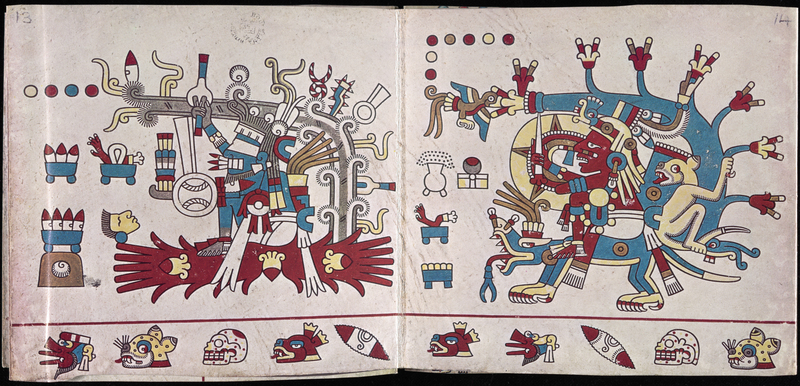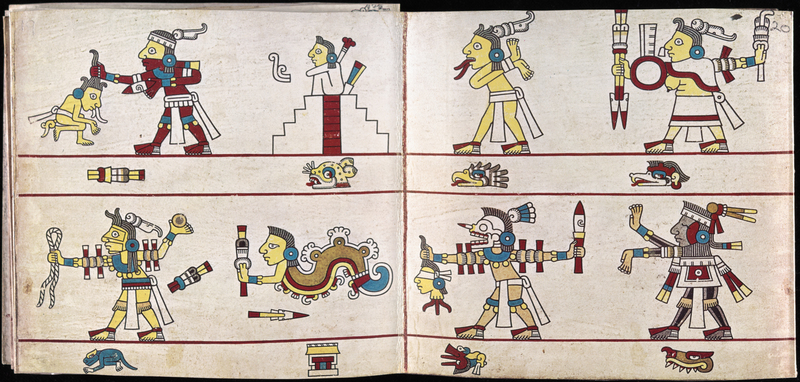Codex Laud
This copy of the Codex Laud is a true-color facsimile edition of the hand painted Pre Colombian manuscript. Painted on Amate paper, the 48 pages depicts the Aztec calendar, also known as tonalpohualli. The colored disks on a couple of the images may represent the types of sacrifices required that day. Part of the Borgia Group, this codex gets its name from Archbishop William Laud, it is now held in the Bodleian Library at Oxford University.
Codices such as the this one are representative of the flourishing manuscript tradition within Aztec society. There are three main loose categories that Mexican manuscript tradition can be broken down into; practical documents, religious didactics and historical books. Practical records include items such as censuses, business records and tax lists. The second category, religious didactics were manuscripts called tonalamatl or religious books which served as an essential guide for the living. They showed the relationship between the natural and supernatural and how humans could have a balanced life through things like rituals and ceremonies. The Codex Laud belongs to the third manuscript tradition, which was historical documents. These manuscripts recorded and helped to chart the history of the mythic and secular lives. This included cosmogonies and annals, which would lay out what rituals were when.


